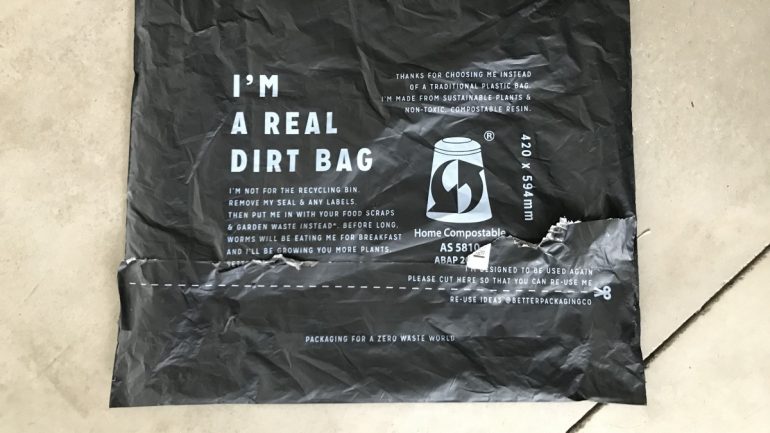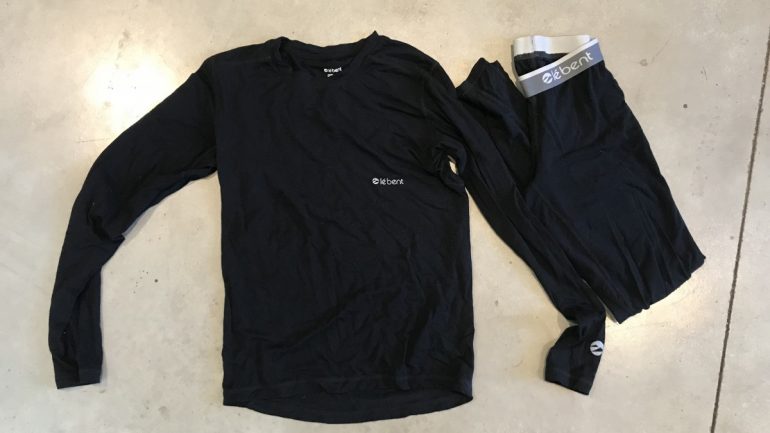Confession: like many women, I have a tender spot for very soft fabrics. They’re usually the expensive variety, like cashmere sweaters, but last I checked it’s not really cool to wear cashmere while ski touring (that’s reserved for the Aspen après, right?). And so I look to other fabrics for my base layers, ones that wick well, dry quickly, look good and, of course, feel fabulous on my skin. Oh, and they should, God willing, not smell so bad after days of wear that I scare my ski partners away.
For such a simple layer, that’s a lot of responsibility.
Enter the Le Bent Le Base 200g Lightweight longsleeve crew and bottom. Le Bent combined the long celebrated merino wool with an unlikely partner, bamboo, to create their signature blend fabric. The result is Le Base, a lightweight base layer that claims to breathe, wick and repel odors like pure merino, without the itch some folks get from wool. If you’re like me, though, you might be thinking: wait. Bamboo? To wear? Yes.
The stalky plant is processed into a rayon thread that resembles the uber soft silky characteristics of cashmere and mimics moisture wicking and quick drying properties of merino. I got a chance to ski tour (and lounge) in them quite a bit this past winter. Here’s my take.
Over years of trying different base layers for skiing, I’ve come to a few conclusions: threads derived from polypropylene generally wick well and dry fast, but aren’t as soft as wool and can smell supremely terrible after just one outing (of course mine don’t smell that bad, but the guy partners I ski with on the other hand…). Merino smells less, is softer on the skin but doesn’t wear quite as long and is sometimes twice as expensive. So where does a bamboo/merino blend fit into all this?
Warmth: Typical for wool, I found the bamboo/merino baselayer to be on the warm side, warmer even than a 200 weight merino top I typically wear for touring. This required some tweaking of my layer system, which on quick-moving days between 10 and 25 degrees is often comprised of a 200 weight merino base layer and Futurelight shell. I found I overheated a little bit more easily in the Le Bent top and so began to reserve it for colder days when that extra warmth was welcome. As for the bottoms, so long as I was in temps less than 30 degrees, I was quite comfortable with the Le Base pants beneath Futurelight L5 shells.
Wicking/drying: The fabric pulls sweat well from the skin, though I did find that the extra warmth did make me sweat a little more than usual. I wouldn’t say it dries quite as quickly as a light poly pro or merino would.
Durability: After a solid three months of continual wear, I experienced no major durability issues, though I did poke a hole in a pant leg while tugging them on a little too enthusiastically in the dark hours of a pre-dawn start. Being that the fabric is relatively lightweight (they also offer a 260g version if you want something thicker and warmer), it is similarly thin to a lightweight merino layer. Adjust your dressing enthusiasm accordingly.
Fit: At 5’6” and 120 pounds, I’m typically a women’s small and that was true for both the longsleeve crew and pant (I’m typically a size 4 pant). Both layers offered a comfortable, relaxed fit that was neither too baggy or constricting. The sleeves extended just past my wrists and the shirt was slightly longer than my torso, something I prefer in baselayers. The flatlock seams in both layers did their job to not chafe and I appreciated the wide waist band on the pant, guaranteed to stay put and not overstretch easily. I typically wear knicker style bottoms, but the full pant was minimal enough to not create pressure points under my ski boots.
Stench: On a scale of 1 to 5, with 1 being the minimal stench I’ve encountered in merino wool and 5 being the worst nose-wrinkling of the poly pro, the Le Base layers rank somewhere around a 3. They won’t chase your friends away, but I did notice they trapped odor more quickly than pure merino.
Feel: True to bamboo rayon’s reputation, this stuff is soft. It’s got that cool silkiness reminiscent of my favorite goat fur, minus the price tag (both 200g crew neck long sleeve tops and bottoms run for $85). Throughout the winter I often found myself wearing the bottoms regardless of whether I planned on skiing. In fact, they became my favorite morning coffee loungewear, didn’t look too techy to pair with a skirt, and they made getting dressed to ski easier because I was already halfway there!

A cute touch: Le Base layers arrived in a compostable bag instead of the typical plastic shipping bags that head right to the trash.
Sustainability factor: Bamboo has had its moments of being in the limelight as the next hip, sustainable, plant-based fabric. There’s good reason for that: the plant regenerates with prolific speed, is incredibly hardy, and requires very little water or other resources to grow. But it’s not without its drawbacks.
The process of turning a tough, stalky plant into silky smooth thread requires extracting the cellulose from the plant and then adding a variety of chemicals, some of which can be quite harmful to humans facilitating the process. Le Bent seems to have remedied this issue by refining the fabric in a closed-loop process where chemicals cannot escape as vapor or liquid, but it’s worth noting as it has historically been the biggest criticism of bamboo fabrics.
Conclusion: The Le Bent Merino/bamboo Le Base 200g Lightweight base layers hit a sweet note between the high price tag of merino wool and the utilitarianism of synthetic materials. They wick well and dry fairly quickly, are easy on the stench and don’t break the bank. Sure, they’re not cashmere but are the closest I’ve found in comparative softness. They feel delightful on the skin for long days of touring or coffee drinking. Now if only someone would start working on a cashmere variety…
Fabric: Rayon from Bamboo – 66.5%/Merino Wool – 28.5%/Elastane – 5%
Shop for them and see our other base layer reviews.
Manasseh Franklin is a writer, editor and big fan of walking uphill. She has an MFA in creative nonfiction and environment and natural resources from the University of Wyoming and especially enjoys writing about glaciers. Find her other work in Alpinist, Adventure Journal, Rock and Ice, Aspen Sojourner, AFAR, Trail Runner and Western Confluence.

